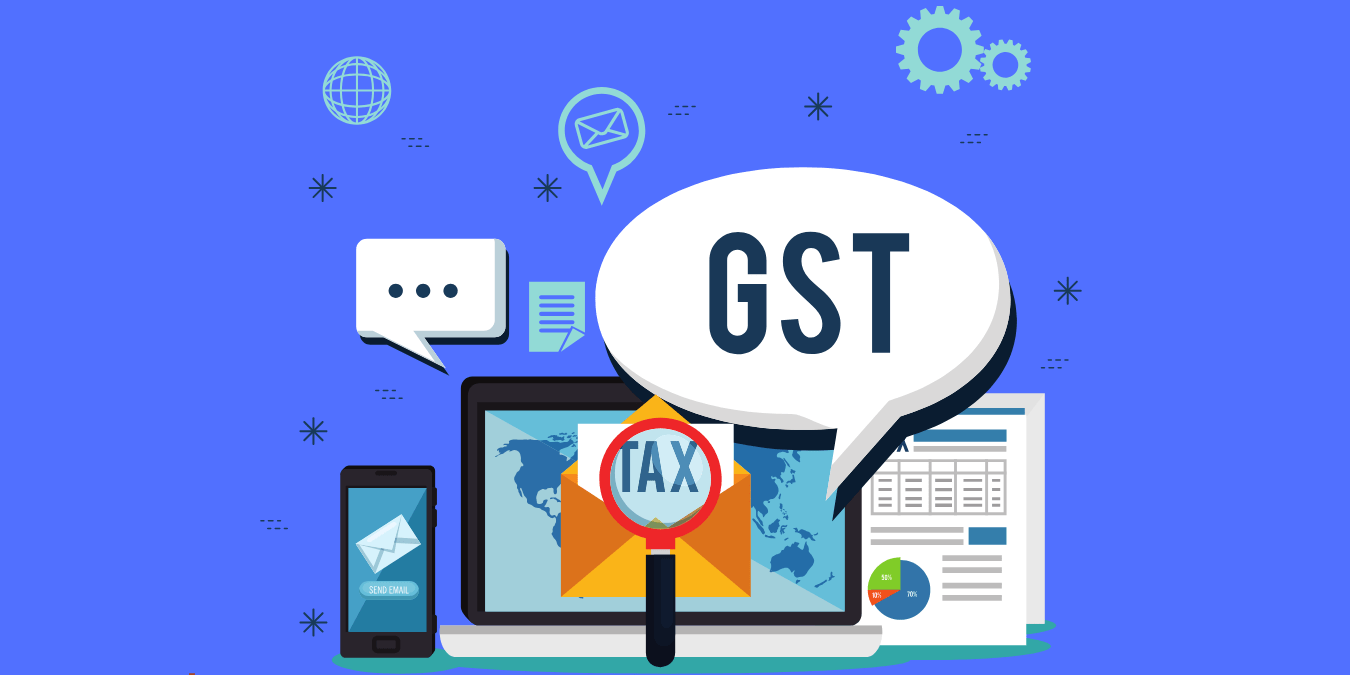
GSTR-9 Exemption for FY 2024-25: The “Free Pass” That Could Cost You!
Think you’re safe from GSTR-9? Think again. This 2025 exemption could secretly trigger a “Deemed Audit” and penalties for millions of small businesses. Discover the hidden trap inside Notification 15/2025 and why savvy traders are refusing this “free pass” to protect their financial future. Are you making a costly mistake?
You’ve seen the headline flashing across tax portals: “Taxpayers with turnover up to Rs. 2 Crores EXEMPT from GSTR-9 for FY 2024-25.” It feels like a victory—a government-sanctioned holiday from compliance headaches. But what if I told you this “gift” comes with a hidden price tag that could trigger a departmental audit years down the line? While the exemption is real, the safety it promises might be an illusion for thousands of businesses who misunderstand what “optional” truly means in the eyes of the law. Before you archive your ledgers and celebrate, you need to uncover the surprising reality behind Notification No. 15/2025.
The “Forever” Change: Notification 15/2025 Deconstructed
For the first time, the relief isn’t just a temporary extension; it’s a permanent shift. Unlike previous years where we waited anxiously for annual extensions, the Central Board of Indirect Taxes and Customs (CBIC), via Notification No. 15/2025 – Central Tax (dated September 17, 2025), has officially exempted registered persons with an aggregate turnover up to Rs. 2 crores from filing the Annual Return (Form GSTR-9) for FY 2024-25 and onwards. This decision, rooted in the GST Council’s push to reduce compliance fatigue for MSMEs, effectively means the government is willing to accept your monthly GSTR-1 and GSTR-3B filings as the final and indisputable truth of your business activity.
The "Silent" Danger: Why Silence is Consent
Here lies the trap: when you choose not to file GSTR-9, you lose your last line of defense. The GSTR-9 is not just a return; it is your only statutory opportunity to voluntarily declare additional liabilities, rectify classification errors (like treating an interstate sale as intrastate), or reverse ineligible Input Tax Credit (ITC) availed by mistake during the year. If you skip filing, the GST portal "deems" your filed GSTR-1 and 3B as perfect. If a future audit reveals a discrepancy—say, a mismatch between your e-invoices and 3B that you could have explained in GSTR-9—you will face demands under Section 73 or 74 with hefty penalties and interest, losing the chance to have self-corrected it "without intent to evade".
The "Aggregate" Trap: Are You Actually Exempt?
Many taxpayers unknowingly disqualify themselves by misinterpreting "Aggregate Turnover." This figure is PAN-based, meaning it sums up the turnover of all your GSTINs across India, not just the one in your state. Crucially, it includes exempt supplies (like interest on fixed deposits), export supplies, and inter-state stock transfers between your own branches. A business with Rs. 1.8 Cr taxable sales and Rs. 25 Lakhs in exempt interest income has an aggregate turnover of Rs. 2.05 Cr, making GSTR-9 mandatory. Failing to file due to this calculation error attracts a late fee of Rs. 50 per day (or lower as per amnesty), subject to a cap, but the real pain is the invitation for scrutiny.
How will the Rs 2 crore Exemption affect Small Traders' Compliance Burden
Notification No. 15/2025 is marketed as a "relief" measure, but for small traders, it shifts the burden from year-end reporting to daily discipline. Here is how the landscape changes:
1. The "Good": Immediate Operational Relief
- Cost Savings: The most tangible benefit is financial. Small traders often pay Chartered Accountants (CAs) or tax practitioners between ₹5,000 and ₹15,000 specifically for GSTR-9 filings. This cost is now effectively zero.
- Paperwork Reduction: Traders are spared the scramble of consolidating 12 months of data, matching ledgers with the GST portal, and explaining minor differences (like rounding offs) that usually trigger anxiety during annual filing.
- Focus on Core Business: Instead of allocating staff time to "tax season" in December, traders can focus on year-end sales, effectively reclaiming productive hours.
2. The "Bad": The Pressure for "Perfect" Monthly Filings
- Zero Margin for Error: Without GSTR-9, your GSTR-1 and GSTR-3B become the final word. If a trader accidentally reports a B2B sale as B2C in GSTR-1, the recipient loses credit, and the trader cannot easily rectify this "officially" on an annual return without filing it voluntarily.
- Loss of "Cleanup" Window: GSTR-9 was the statutory window to pay any liability missed during the year or reverse ineligible ITC. By skipping it, traders lose this formal chance to self-correct "without intent to evade," potentially exposing them to higher penalties under Section 74 (fraud/suppression) if an audit catches the error later.
- Bank Credit Friction: Banks often ask for "filed Annual Returns" (GSTR-9) to process working capital loans. A "deemed exempt" status might require traders to explain why they haven't filed, leading to additional documentation requests (like CA-certified turnover certificates) to prove eligibility, ironically creating new paperwork.
3. The "Ugly": The Record-Keeping Paradox
- Phantom Compliance: The exemption is only from filing the return, not from maintaining the data. Traders must still maintain books of accounts, invoices, and audit trails as per Section 35. If a Departmental Audit (under Section 65) occurs, the officer will ask for the very same reconciliations that would have gone into GSTR-9.
- The "Aggregate" Trap: A trader with ₹1.8 Cr sales might feel safe, but if they have ₹25 Lakhs of exempt income (like interest), they cross the ₹2 Cr threshold. Ignorance of this calculation can lead to a "failure to file" notice years later, attracting penalties that wipe out any cost savings.
Can Businesses Opt Out of Exemption and still File GSTR 9 Willingly
Yes, absolutely. The exemption for turnover up to ₹2 crore is an option, not a prohibition. Businesses can choose to waive this "privilege" and file GSTR-9 voluntarily. In fact, tax experts often advise doing exactly this for strategic reasons.
Why Would Anyone File if They Don't Have To?
It might seem counterintuitive to invite extra paperwork, but voluntary filing offers critical long-term protections:
- The "Self-Correction" Shield: GSTR-9 is your only legal avenue to declare any tax liability that you missed in your monthly GSTR-1 or 3B returns during the year. If you skip filing, your monthly returns are "deemed final." If a future audit uncovers an error (e.g., short payment of tax), you lose the argument that you intended to self-correct, exposing you to higher penalties under Section 74 (suppression of facts) rather than the lenient Section 73.
- Creditworthiness & Loans: Banks and lenders frequently ask for "filed Annual Returns" as proof of business stability and compliance when processing loan applications. A "deemed exempt" status often leads to bureaucratic friction, requiring you to produce alternative CA-certified certificates to prove your turnover eligibility, which can be more hassle than just filing the return.
- Audit Defense: If your financial statements (audited accounts) differ from your GST returns—a common occurrence due to year-end accounting adjustments—GSTR-9 allows you to reconcile these figures officially. Without it, any discrepancy found by a tax officer 3 years later will look like tax evasion.
How to File Voluntarily (Step-by-Step)
The process for voluntary filers is identical to mandatory filers. There is no special "voluntary" button; you simply access the return as usual:
- Login to GST Portal: Navigate to Services > Returns > Annual Return.
- Select Year: Choose FY 2024-25 from the dropdown.
- Bypass the "Nil" Prompt: The system might ask if you want to file a "Nil" return. Select "No" if you have data to report.
- Fill the Tables:
- Table 4: Details of advances, inward and outward supplies made during the financial year on which tax is payable.
- Table 5: Outward supplies made during the financial year on which tax is not payable (Exempt/Nil Rated).
- Table 6-8: Input Tax Credit (ITC) availed and reversed.
- Compute & Pay: If your voluntary reconciliation reveals extra liability, you can pay it via Form DRC-03 (select "Annual Return" as the cause of payment).
- File: Verify with EVC or DSC.
Critical Warning: Once you file GSTR-9, you cannot revise it. Ensure your data is final before hitting submit. Also, if you start the filing process, you must complete it; leaving it in "Draft" status can sometimes cause technical glitches in future periods.
The Strategic Verdict: When You Should File Anyway
Smart tax planning often means doing more than the minimum required. Filing GSTR-9 voluntarily is highly recommended if your books of accounts (audited financial statements) vary from your GST returns. It acts as a reconciliation tool, allowing you to put your side of the story on record before an officer asks for it. Furthermore, for businesses seeking bank loans or credit limits in 2025, a filed GSTR-9 is often viewed as a "clean chit" of compliance health, far superior to a patchwork of monthly returns. It solidifies your financial credibility and ensures that your electronic credit ledger balances are frozen and authenticated by your own declaration.
The "To-File-Or-Not-To-File" Checklist for FY 24-25
- Check 1: Is your PAN-India turnover (including exempt income) strictly below Rs. 2.00 Cr?
- Check 2: Do you have unclaimed ITC or liability mishaps from FY 24-25? (If yes, FILE).
- Check 3: Does your GSTR-2B match your claimed ITC perfectly? (If no, FILE to explain).
- Check 4: Are you planning major business expansion or loans? (If yes, FILE for credibility).
Future Teaser: With the GST Council discussing "Pre-filled GSTR-9" based on AI-driven analysis of your e-invoices for 2026, the window for manual correction is closing. Are you ready for the era where the taxman knows your liability before you do?































